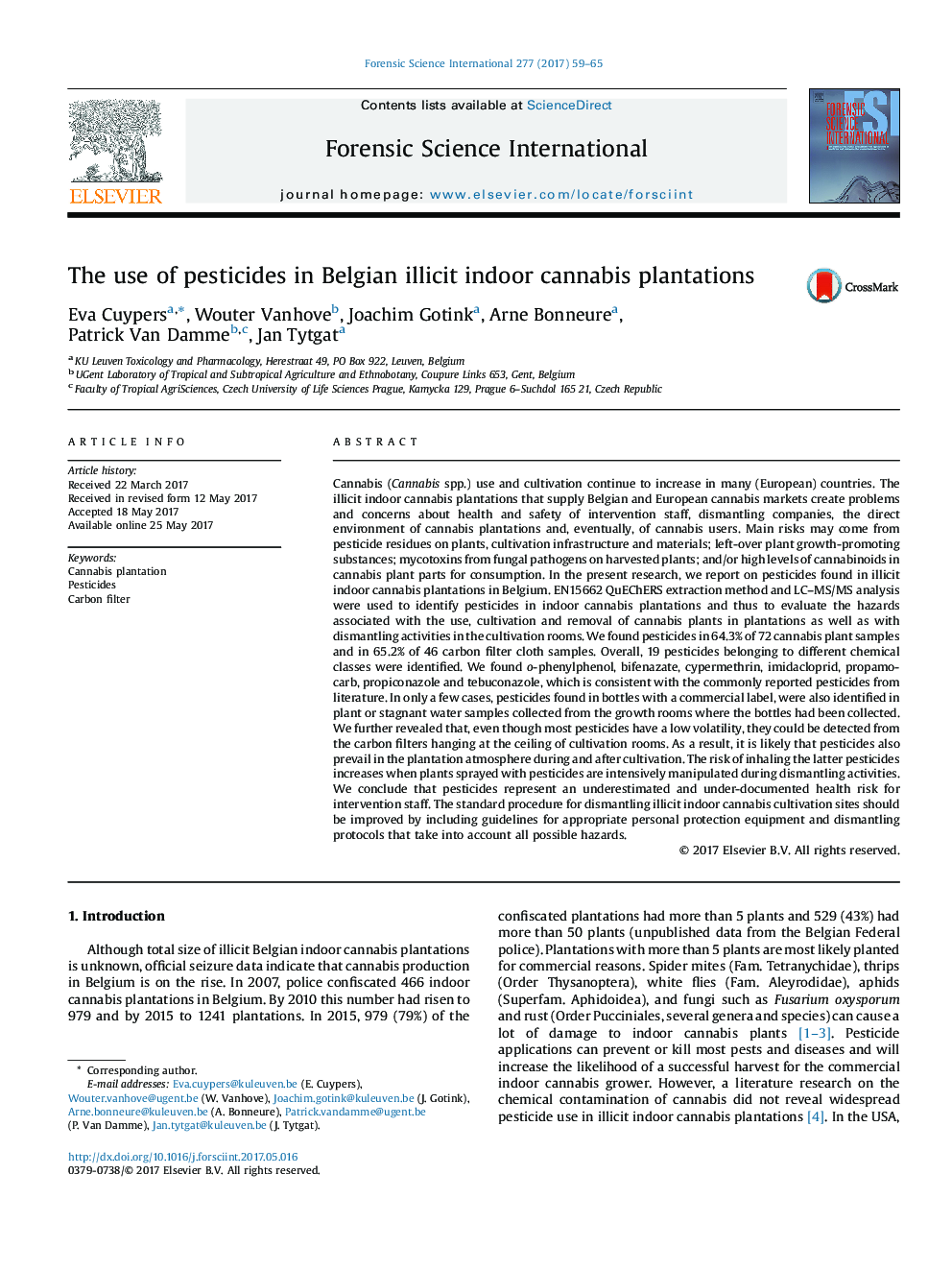| کد مقاله | کد نشریه | سال انتشار | مقاله انگلیسی | نسخه تمام متن |
|---|---|---|---|---|
| 4760252 | 1421973 | 2017 | 7 صفحه PDF | دانلود رایگان |
- The use of pesticides in illicit indoor cannabis plantations is seriously underestimated.
- In 72% of these plantations, pesticides were found on plants in each growth room.
- 64% plant samples tested positive on one or more pesticides.
- Pesticides were found in 65% out of the carbon filter cloth samples.
- Illegal cannabis cultivation should be considered as a serious health risk.
Cannabis (Cannabis spp.) use and cultivation continue to increase in many (European) countries. The illicit indoor cannabis plantations that supply Belgian and European cannabis markets create problems and concerns about health and safety of intervention staff, dismantling companies, the direct environment of cannabis plantations and, eventually, of cannabis users. Main risks may come from pesticide residues on plants, cultivation infrastructure and materials; left-over plant growth-promoting substances; mycotoxins from fungal pathogens on harvested plants; and/or high levels of cannabinoids in cannabis plant parts for consumption. In the present research, we report on pesticides found in illicit indoor cannabis plantations in Belgium. EN15662 QuEChERS extraction method and LC-MS/MS analysis were used to identify pesticides in indoor cannabis plantations and thus to evaluate the hazards associated with the use, cultivation and removal of cannabis plants in plantations as well as with dismantling activities in the cultivation rooms. We found pesticides in 64.3% of 72 cannabis plant samples and in 65.2% of 46 carbon filter cloth samples. Overall, 19 pesticides belonging to different chemical classes were identified. We found o-phenylphenol, bifenazate, cypermethrin, imidacloprid, propamocarb, propiconazole and tebuconazole, which is consistent with the commonly reported pesticides from literature. In only a few cases, pesticides found in bottles with a commercial label, were also identified in plant or stagnant water samples collected from the growth rooms where the bottles had been collected. We further revealed that, even though most pesticides have a low volatility, they could be detected from the carbon filters hanging at the ceiling of cultivation rooms. As a result, it is likely that pesticides also prevail in the plantation atmosphere during and after cultivation. The risk of inhaling the latter pesticides increases when plants sprayed with pesticides are intensively manipulated during dismantling activities. We conclude that pesticides represent an underestimated and under-documented health risk for intervention staff. The standard procedure for dismantling illicit indoor cannabis cultivation sites should be improved by including guidelines for appropriate personal protection equipment and dismantling protocols that take into account all possible hazards.
Journal: Forensic Science International - Volume 277, August 2017, Pages 59-65
